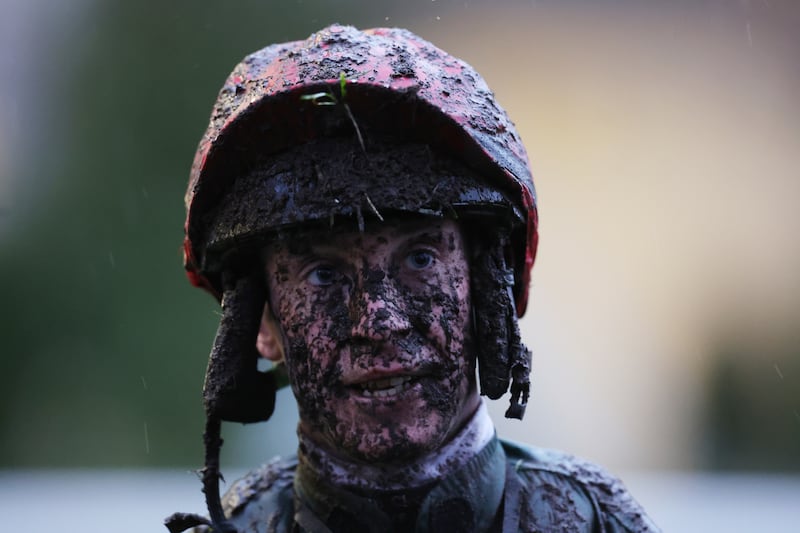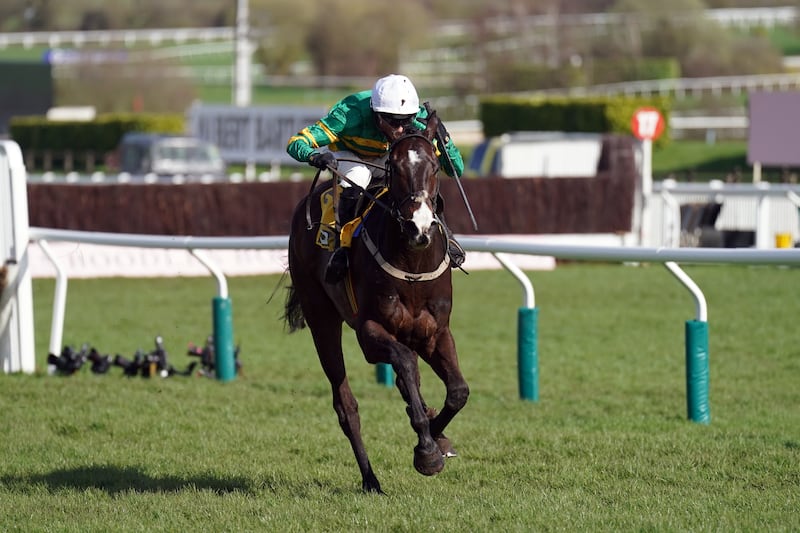The Warwick Hotel, Galway Airport, the Great Southern on Eyre Square. Leo Moran reels off the landmarks one by one. Today they are either long gone or have been through several name changes. But in March 1991 these Galway fixtures had a starring role as Moran’s band, The Saw Doctors, hit the streets in the company of Irish Times photographer Frank Miller and five older gentlemen – the musicians’ fathers.
“We’d done a few photoshoots and they weren’t our favourite thing,” recalls Moran. “And the only time our fathers would have had their pictures taken consistently would have been on their wedding day. They weren’t expecting a day of location photography – like a mini movie-shoot.”
In the early 1990s, The Saw Doctors had become a sensation thanks to their blend of raggle-taggle rock and lyrics that drew on everyday Irish life. And spring 1991 found the group, built around the songwriting partnership of Tuam natives Moran and Davy Carton, preparing to release their debut album, If This Is Rock and Roll, I Want My Old Job Back.
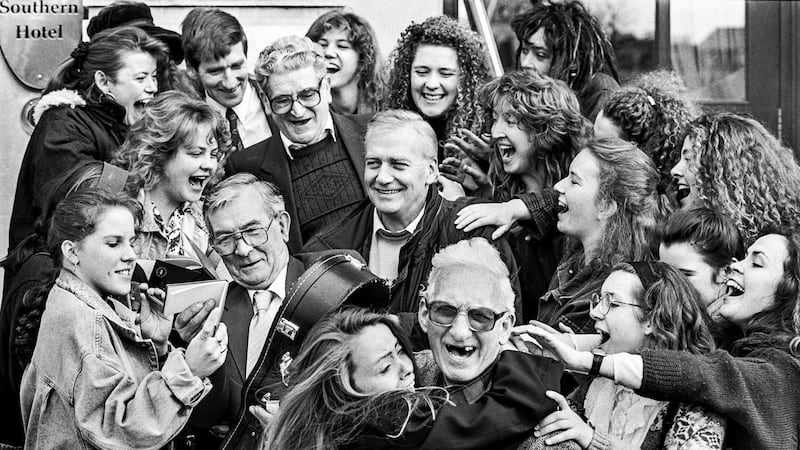
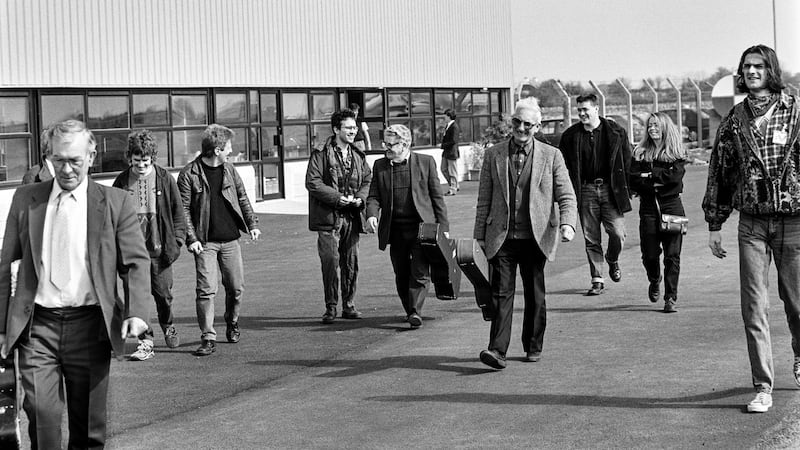
The pithy title was arrived at the previous year during recording sessions at Loco Studios, near Newport in Wales. One thing led to another and it was decided the cover should feature The Saw Doctors’ dads dressed as band members. With the LP now marking its 30th anniversary those images are celebrated all over again in a vinyl re-release packaged with a sumptuous commemorative booklet.
“Galway at the time had a lot going on,” says lead guitarist Moran. “Everybody was starting bands or acting or writing books. There was a huge tendency towards artistic expression. It was exciting. You wouldn’t have felt part of it unless you were doing something yourself.”
Nobody had any money. But the air was full of a sense of possibility. Macnas, the theatre company specialising in large-scale outdoor events, was founded in Galway in 1986. Two years later, Mike Scott of The Waterboys arrived in the west of Ireland. Installed at 300 year-old Spiddal House, he drilled into the Connemara psychosphere with the chart-topping Fisherman’s Blues and its 1990 follow-up, Room To Roam.
“Everybody bought into this idea of having fun,” recalls Ollie Jennings, The Saw Doctors’ manager. “We were poor. We were all on social employment schemes. But it was a busy time. The Waterboys were in and out of town. And just before The Saw Doctors, The Stunning [formed in Galway in 1987] had a number one album and several hit singles.”
Moran and his bandmates had themselves enjoyed a monster smash in 1990 with I Useta Lover. Released by promoter MCD’s Solid Records label as the second half of a two-single deal, hopes for the track had been initially modest. N17, The Saw Doctors’ debut, had flopped badly, selling 150 out of a run of 500 vinyl pressings.

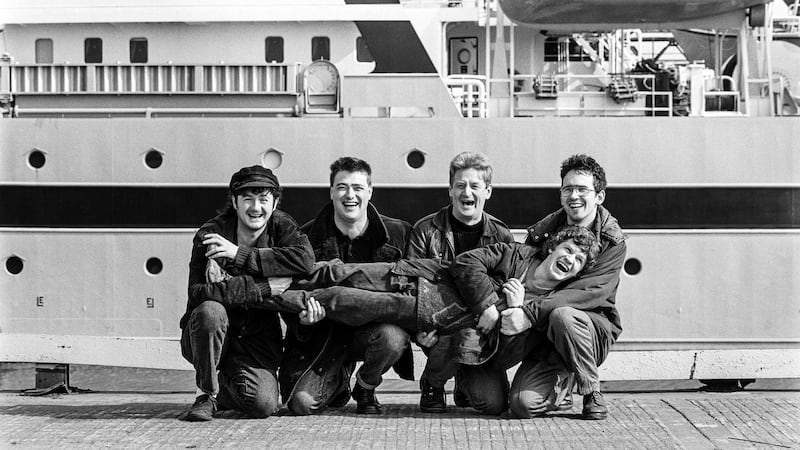
But then The Saw Doctors had always been an unconventional proposition. Where other artists played down their Irishness, the Galwegians had embraced it. Their lyrics brimmed with west of Ireland colloquialisms and references to emigration and small town romance. Could it be their material was simply too true to the textures of Irish life?
“Aside from one or two plays by Larry Gogan, N17 had died,” says Jennings. “It came out in January 1990. Mike Scott had produced it. That’s the reason Denis Desmond [of MCD]signed The Saw Doctors – because Mike Scott had his name attached.”
Scott had helped The Saw Doctors in other ways. Formed in Tuam in 1986, initially with Mary O’Connor on vocals, they had relocated to Galway City, where they had a successful residency at The Quays bar.
That’s where Scott first saw them. Struck by their earnest sound and lack of pretension, he took them on tour with The Waterboys, starting with a 2,000-capacity show at Cork City Hall in December 1988. This was a big step up for the group – especially bassist Pearse Doherty. Cork was just his second gig with The Saw Doctors. Prior to that, he’d been gainfully employed as an assistant at Deasy’s Fruit and Veg on Sea Road, where he was recruited by a slightly desperate Moran (The Waterboys tour was a week away).

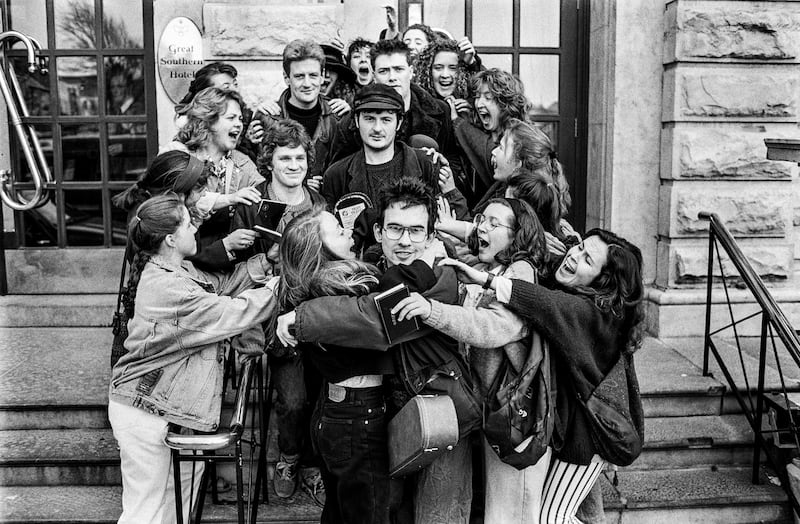
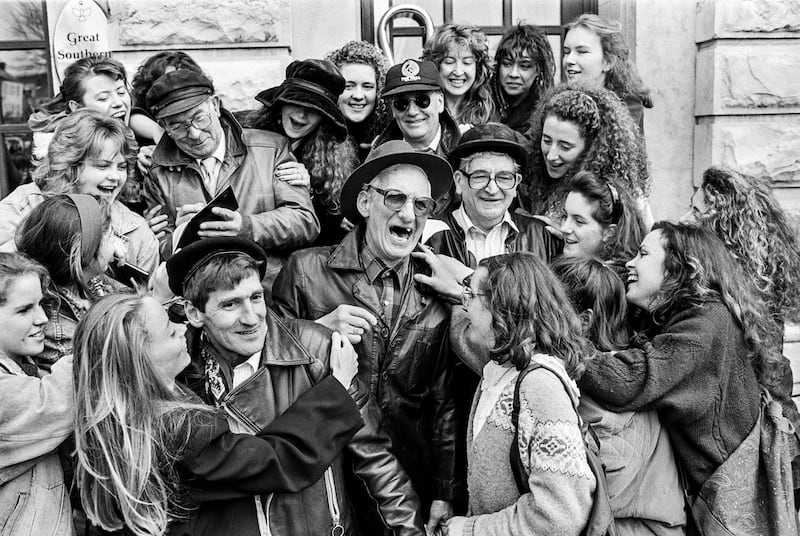
Back in Galway, they were soon at the centre of a vibrant scene. “Toasted Heretic were there, The Stunning, The Real Men, Little Fish,” says Moran. “Galway had a lot going on. It still has. Someone once suggested it’s because it has a fast-running river. That keeps the energy going down the town. And also the fact there’s a nice bit of Gaeilge there. There are a lot of really good elements.”
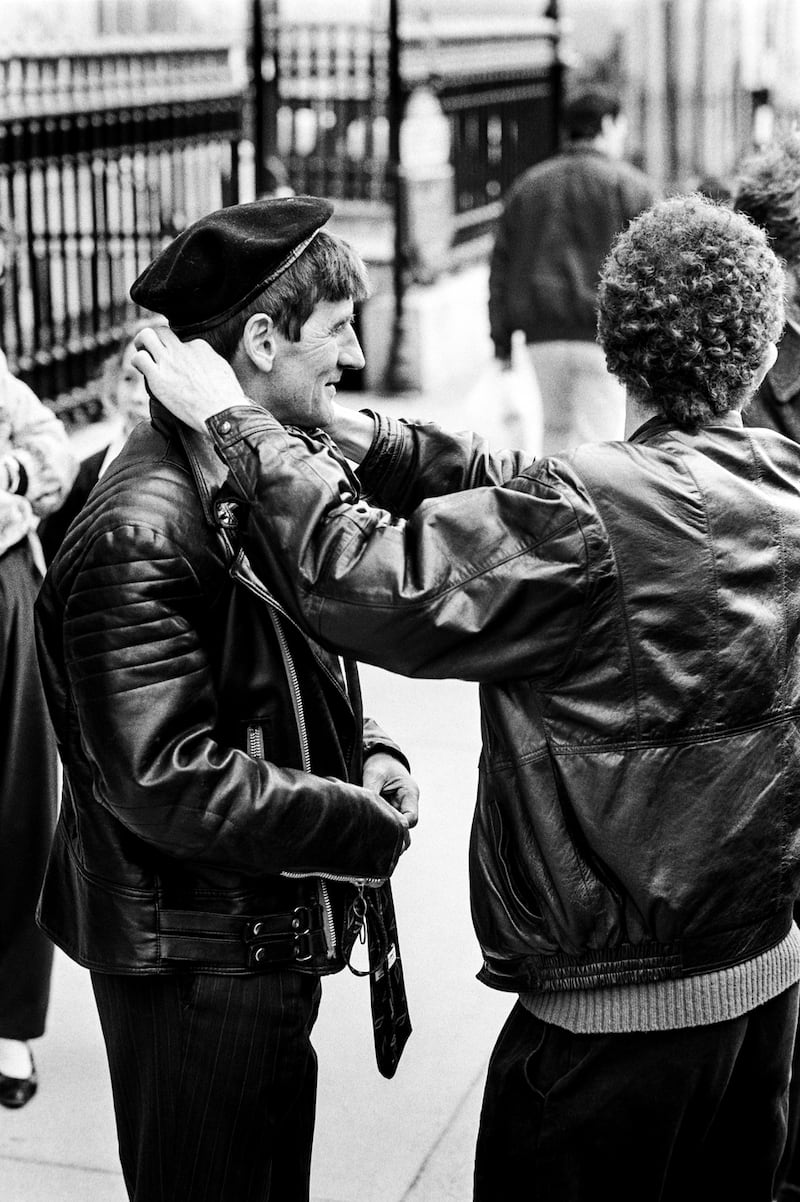
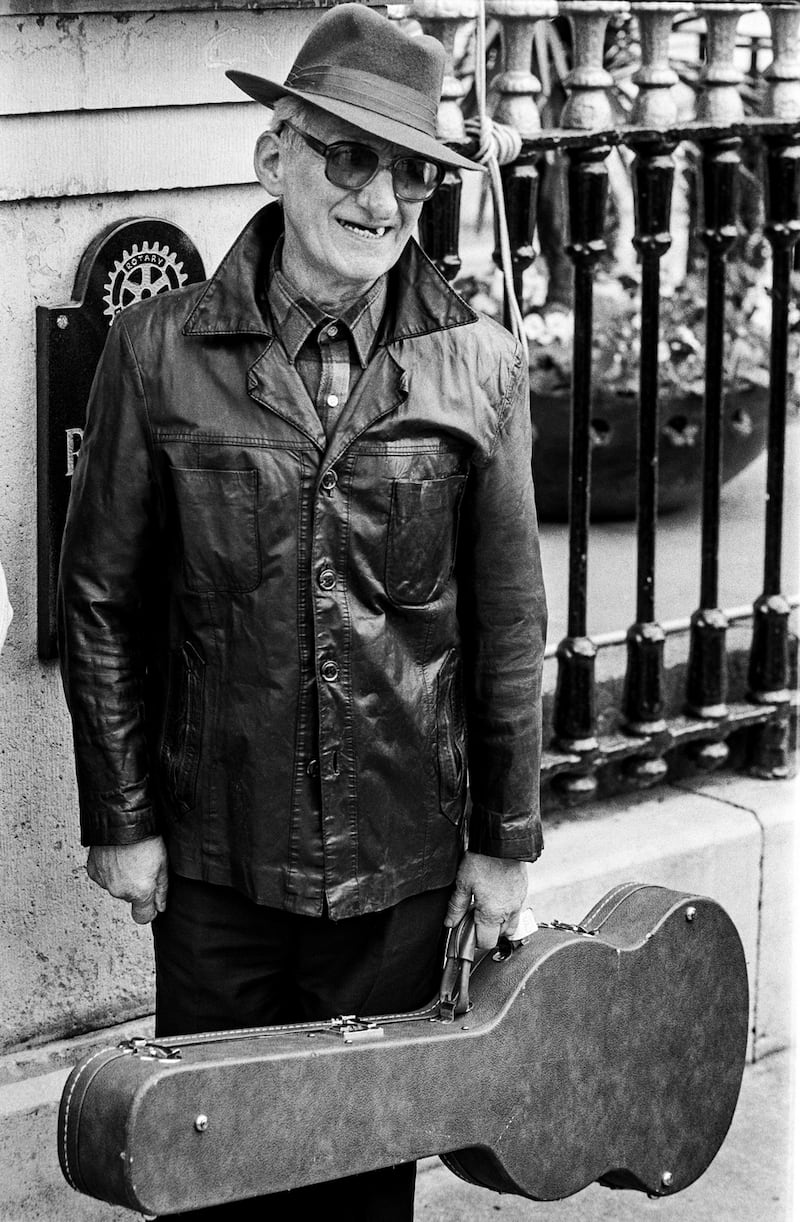
I Useta Lover, which famously rhymed “mass” and “ass”, was released without fanfare in July 1990. Initially, there was little indication it was about to become a phenomenon. Ollie Jennings recalls members of The Saw Doctors manning the gates at the first Féile festival in Tipperary in August 1990, spending every morning slapping wristbands on concert-goers.
“All the Solid team were working flat out for their sister company MCD, who were organising the first Féile,” says Jennings. “Larry Gogan played I Useta Lover on 2FM and slowly people started to send in requests for the track – when The Saw Doctors got home from Féile on the first Monday in August, their friends in Tuam said that I Useta Lover had crept into the charts at number 19 on the Sunday.”
With Larry Gogan once again The Saw Doctors’ champion, the track finally topped the charts in mid-September. “It was nine weeks at number one. For about a year you couldn’t hear anything else on the radio,” says Jennings. “It distorted The Saw Doctors a lot – to have something so huge. We could never reach those heights again. It was one of those freak things.”
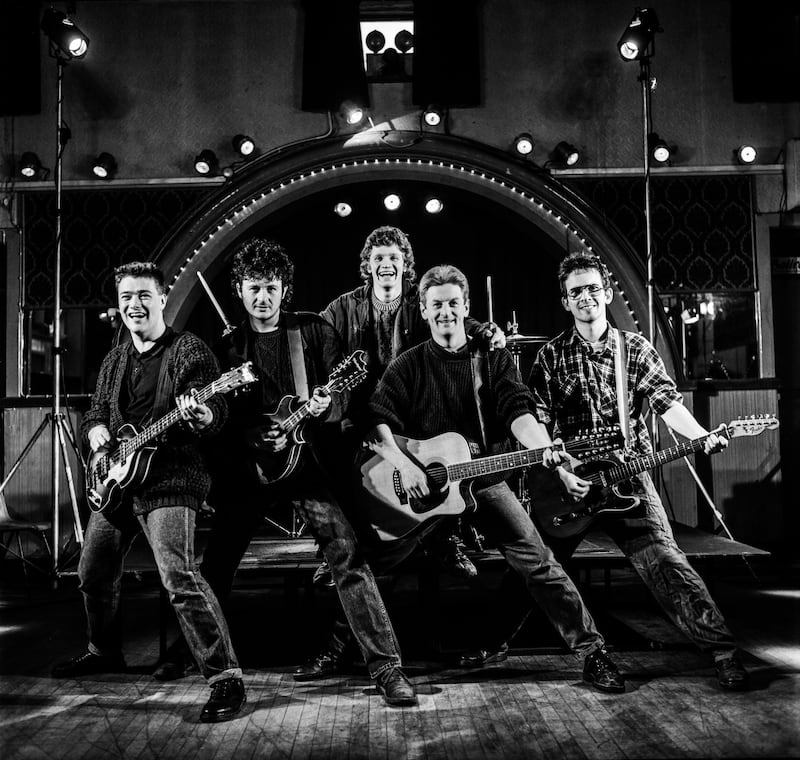
I Useta Lover was still all over the radio in March 1991 as the band and their fathers assembled in Galway. Joining them was Frank Miller, the award-winning Irish Times photographer, and Tom Conroy, a founder of Macnas (along with Jennings and others) and creative director for the photoshoot.
“We were working with Macnas as part of a social employment scheme,” says Moran. “It was a way of getting people off the live register. You received the same amount as you did on the dole. But you didn’t show up on the unemployment figures. In Macnas, we were surrounded by all types of artistic people, from different backgrounds.”
We brought them for lunch and they had a couple of pints. That relaxed everything
The first destination was Galway Airport, where the dads were photographed alighting from an Aer Lingus plane, the Dutch-built “Nifty Fifty” Fokker 50 turboprop, St Fintan. The party then returned to Eyre Square. “We had a set up where all the women from Macnas were going to ambush our fathers at the front of the Great Southern,” says Jennings.
After the early rise the pressure of fending off dozens of female “fans” was a bit much for the dads, several of whom were starting to flag. “We brought them for lunch and they had a couple of pints. That relaxed everything,” says Moran. “The final shoot was at The Warwick. That was the one that ended up on the cover.”
A second series of photos featured The Saw Doctors dressed up as their fathers. Singer Carton’s dad, Tom, was a mechanic. So he donned greasy overalls and mucked around with an engine. Moran went to the racecourse where his father, Jimmy, was a bookmaker. Sometimes, though, the logic behind the pictures was a little fuzzy.
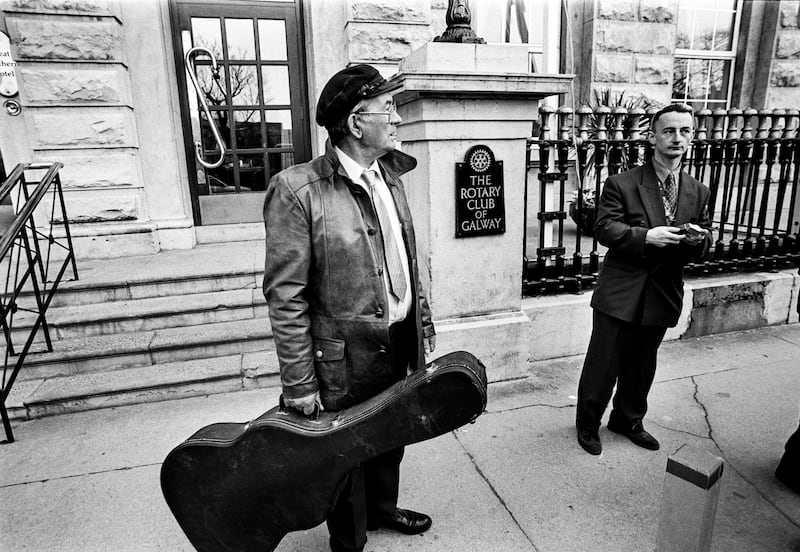
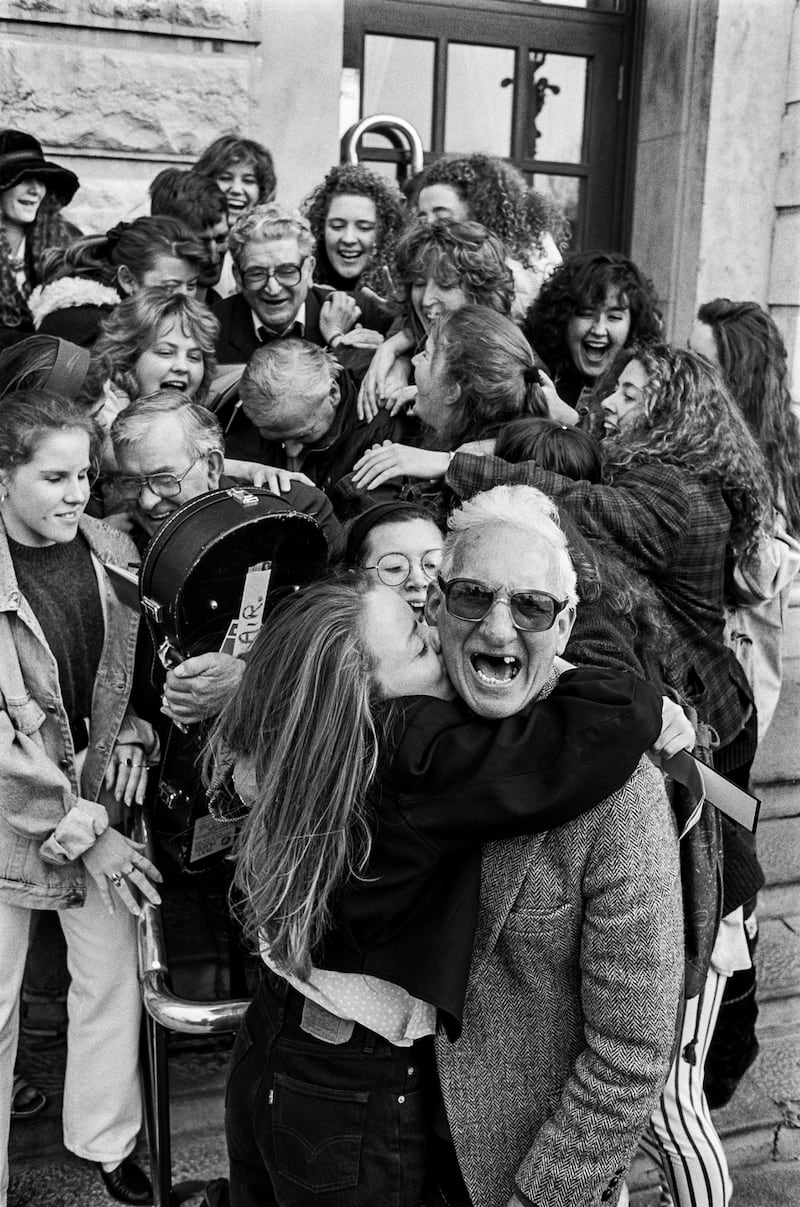
“At one point we went, ‘why don’t we try something else?’. So John [Donnelly, drummer] pretended to be a guard,” says Moran. “In the picture he’s a bean garda as they were then called. Why, I don’t know.”
Three decades on the images are suffused in poignancy. Galway has changed beyond recognition. The Warwick, which hosted gigs by Coldplay, New Order and Snow Patrol, was demolished in 2019. Galway Airport effectively shuttered in 2011. The Great Southern is now The Hardiman. And of the five fathers on the cover, three have died – including Moran’s dad, Jimmy.
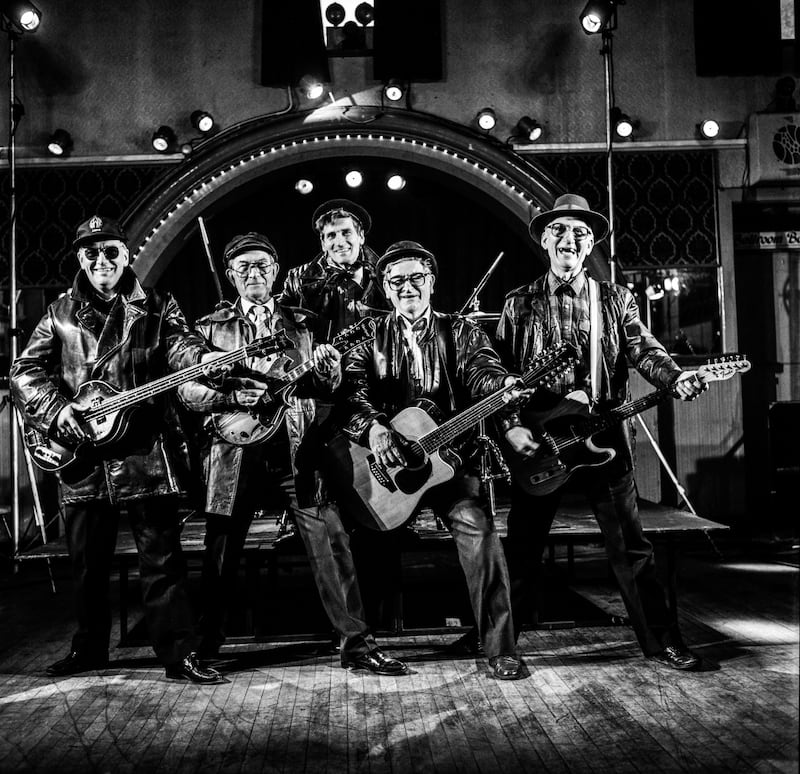
“He knocked great fun out of it,” says the guitarist. “My mother had died just before the album was released. He was going into his 70s on his own. And then all of a sudden he’s on the cover of an album. People got to know him and he became interested in The Saw Doctors. He started coming to gigs and ended up going on tour with us in England. He used to introduce the band to the stage. He’d go out and meet people. Everyone wanted to talk to him. It was really good for him at the time.”
If This Is Rock And Roll, I Want My Old Job Back: 30th Anniversary Vinyl Reissue is released June 25th



















